Blog Categories +
When it comes to cleaning, sanitizing, and disinfecting, things can get controversial. If you’ve wondered what the differences are and how to actually do them, this post will clear all of that up for you and share natural ways to accomplish each one. As someone that hasn’t used bleach or any harmful cleaners for close to twenty years, I am here to tell you that not using bleach doesn’t mean that everyone’s going to get sick in your house. That’s what I used to think. When I was teaching I would spray a bleach/water mixture, disinfecting wipes, and/or disinfecting sprays on the classroom tables multiple times daily just to try to eliminate “all the germs”. Looking back, I realize how harmful this was but I also recognize that this is just was me, trying my best to keep myself and my students healthy. If you feel like this and are curious if you could drop harmful chemical cleaning products that you know can’t be good for you if you’re feeling lightheaded or short of breath after using them, I’m here to show you how! It can be done, it’s easier than you think, AND you’ll save hundreds of dollars a year (at least!) on those products that are doing more harm than good.
Let’s start with some definitions – what is the difference between cleaning, sanitizing, and disinfecting?
Did you know that regular, consistent cleaning reduces germs in the home? Sanitizing is taking it one step further by removing any remaining germs left from cleaning and disinfecting kills any remaining germs/bacteria and viruses on surfaces. Generally speaking, cleaning is all that is necessary in an average home. It’s also helpful to recognize that some germs are okay – germs help to build up our immune systems. If we lived in homes that were germ, bacteria and virus free, once we were exposed to something we would get it because we hadn’t built up a healthy immune system. Once I realized this, I loosened my grip on disinfection in our home.*
*If you haven’t read my 3rd book, Clean Mama’s Guide to a Healthy Home, I go into extensive detail about how to great a non-toxic home – check it out here.
CLEAN: Removing dirt, stains and grime. Similar to how using soap and water and washing hands removes germs and washing them down the drain, spraying a surface with a cleaner and wiping it clean is cleaning it.
SANITIZE: Kills bacteria on surfaces.
DISINFECT: Kills bacteria and viruses on surfaces.
Let’s use cleaning a kitchen sink as an example – if you do the Nightly Sink Scrub and scrub your sink with dish soap and the baking soda mixture, you are CLEANING the sink. Most germs will wash down the drain. If you boil water and pour it in your sink, you are SANITIZING sink. The water/steam is around 212 degrees which effectively sanitizes surfaces. If you spray hydrogen peroxide in your sink and let it sit for 5 minutes, now you are DISINFECTING your sink.
Bonus: Microfiber cleaning cloths can remove up to 99% of germs! They don’t spread germs around the way paper towels, cleaning wipes, and other materials do. Here are my favorite microfiber cleaning cloths. I also have a HUGE discount on this microfiber cleaning cloth bundle.


Now that you know the difference between cleaning/sanitizing/disinfecting, let’s talk about when you need them and then how to safely clean, sanitize, and disinfect.
QUICK TIP: Did you know that regardless of what you are disinfecting with, in order to truly disinfect you need to let the cleaner sit on the surface for at least 10 minutes before wiping it off?
When Should You Clean/Sanitize/Disinfect?
This depends on your own personal comfort level, but generally speaking, cleaning removes most germs. I err on the side of caution and have a simple routine for what and when I clean vs. sanitize/disinfect. If there’s an illness running its course in our home, I’ll add a level of disinfection to the entire house. If you have an immune-compromised family member, you’ll want to follow the instructions from your physician.

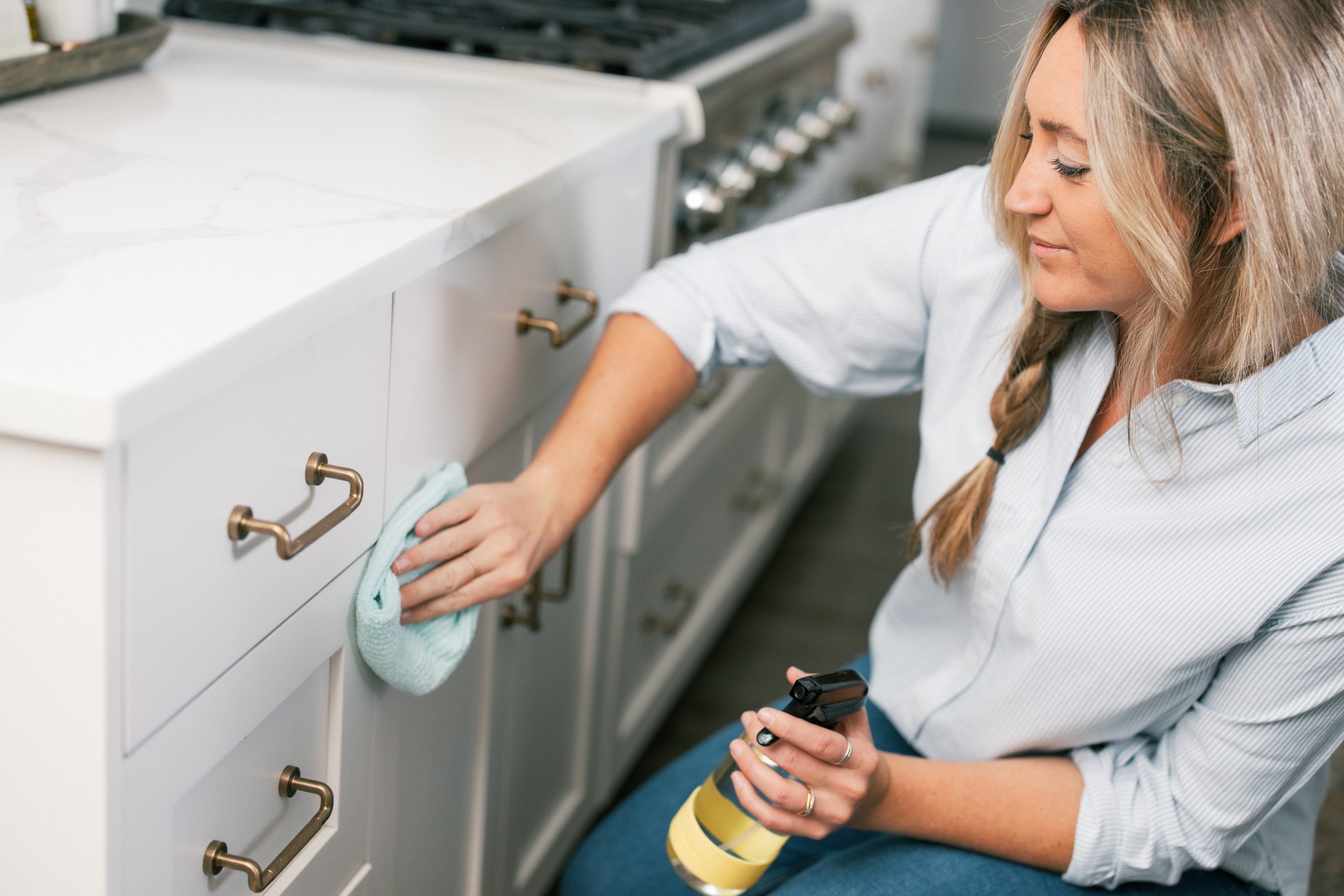
Here are some steps that I take/unwritten rules I follow:
DAILY:
- Clean kitchen counters and sink; check bathroom counters – spray and wipe clean if necessary.
- I do laundry daily – if anything needs to be sanitized or washed on hot, I keep it separate and wash it.
- Use the sanitize cycle on the dishwasher for washing dishes.
WEEKLY:
- I follow the Clean Mama Routine – this allows for consistent cleaning. Consistent cleaning keeps germs off surfaces.
- Clean bathrooms on Mondays – I use my DIY All-Purpose Disinfecting Cleaning Spray for normal weekly cleaning and a stronger solution if necessary – see below for my Natural Disinfecting Spray recipes
- I use Hydrogen Peroxide to disinfect toilet brushes, kitchen and bathroom surfaces – see more below.
ILLNESS:
- Spray Everclear-based disinfecting cleaner (see below) on all hard surfaces – bathrooms, kitchen surfaces. Let sit for 10-15 minutes and wipe clean.
- Wipe remotes, door knobs, light switches, etc. with rubbing alcohol.
- Launder sheets and towels on sanitize cycle and dry on high. Repeat laundering after illness has passed.
- Change hand towels daily. Wash all towels on sanitize cycle and dry on high.
- Use steam cleaner on soft surfaces to sanitize – sofa, pillows, etc.
- Launder throw pillows and blankets.

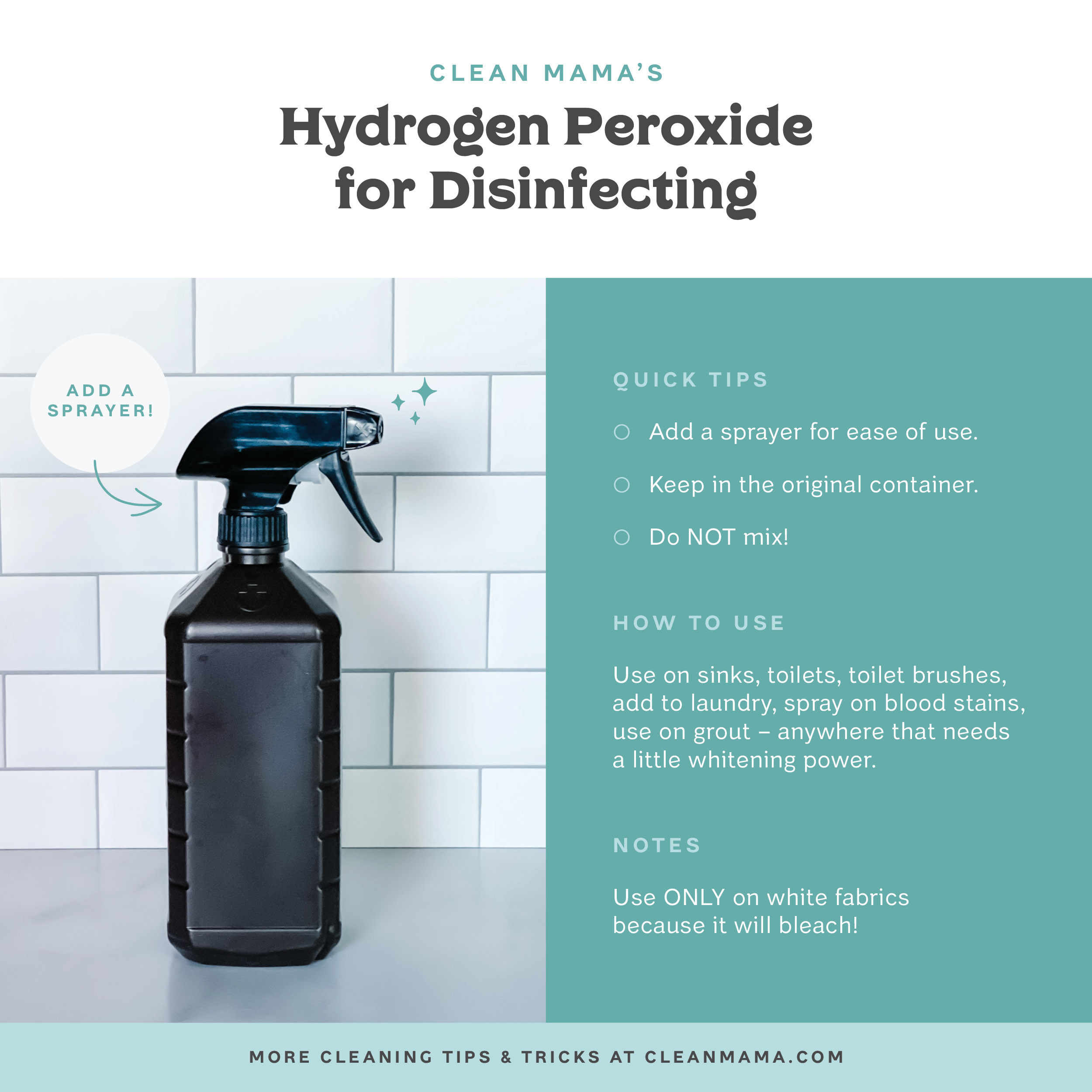
I love using Hydrogen Peroxide as a disinfectant on kitchen and bathroom surfaces. Simply add a sprayer and keep the bottle handy! Spray toilets, toilet brushes, sinks, and other hard surfaces that you want to disinfect. I sell sprayers in the shop if you need one.
If you want to mix up a cleaner to clean, sanitize, or disinfect, I have lots of DIY recipes here. If you’d like a little more guidance on using alcohol in a DIY cleaner, keep reading.
In order to disinfect with alcohol, you need a final mixture that is made up of at least 60% alcohol – that’s why I recommend using Everclear with 95% alcohol. We don’t drink Everclear, I only use it for cleaning. It’s similar to vodka – it’s clear and is a grain alcohol so it’s ‘non-toxic’. For reference, Vodka has a 40-60% alcohol content which is why I add vinegar and essential oil to it to up its germ-killing qualities for my original All-Purpose Disinfecting Spray recipe.

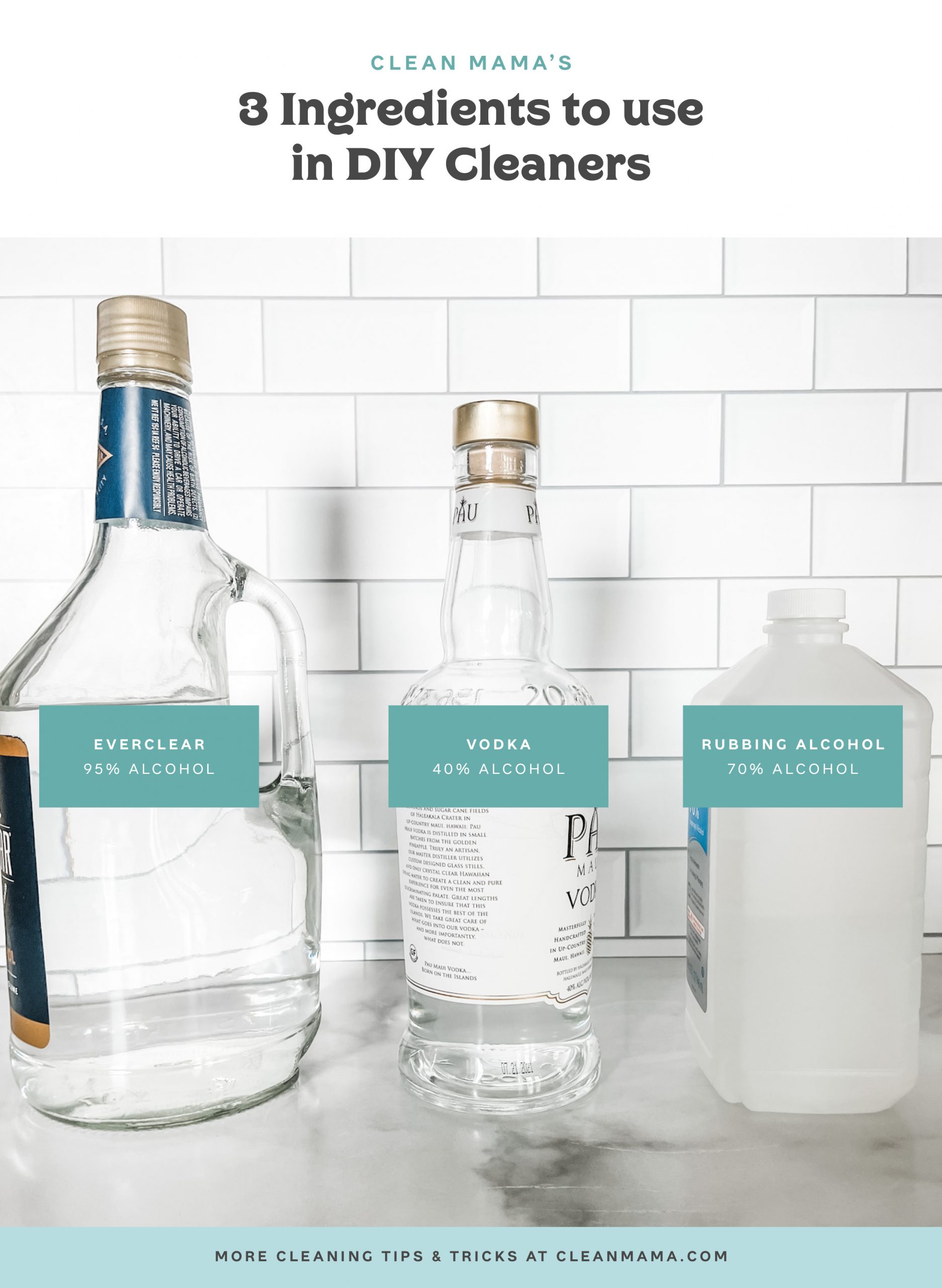
Please note: If Everclear isn’t available in your state, look for vodka that is at least 60% alcohol and don’t dilute it with water.
NATURAL DISINFECTING SPRAY (WITHOUT VINEGAR)
Best used on stone surfaces – granite, marble, quartz.
1 cup Everclear (look for one with 95% alcohol)
2/3 cup water
1 -2 drops or pumps of dish soap
15 drops essential oil (optional)
Mix ingredients in a spray bottle, shake and spray on surfaces you wish to disinfect. Spray thoroughly to saturate surface and allow to sit for 10 minutes to disinfect surfaces.
NATURAL DISINFECTING SPRAY (WITH WHITE VINEGAR)
1 cup Everclear (look for one with 95% alcohol)
1/3 cup water
1/3 cup white vinegar
15 drops essential oil (optional)
Mix ingredients in a spray bottle, shake and spray on surfaces you wish to disinfect. Spray thoroughly to saturate surface and allow to sit for 10 minutes to disinfect surfaces.
I hope that this post gives you some information on cleaning vs. sanitizing vs. disinfecting and gives you the information you need to safely clean and disinfect your home when needed!

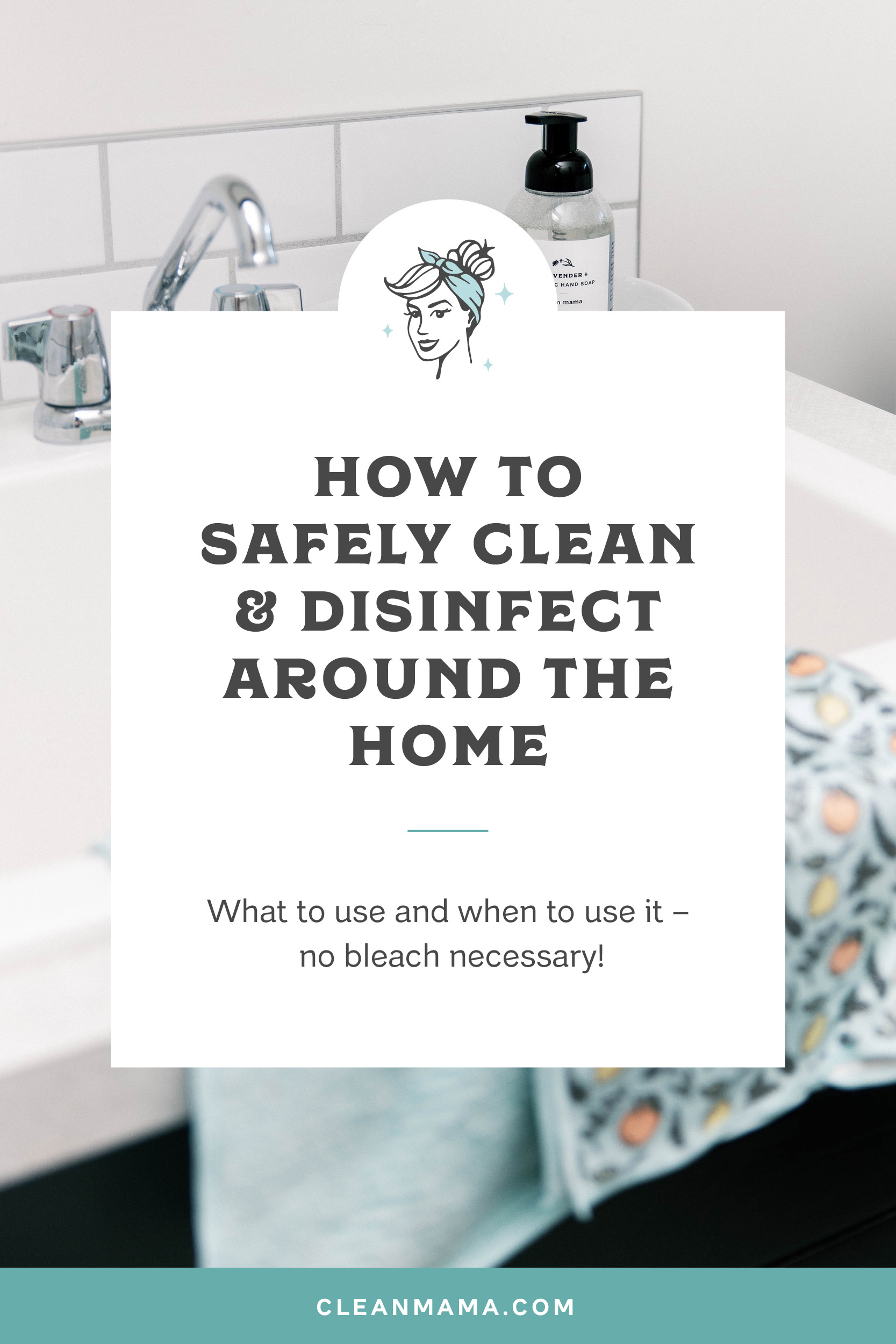


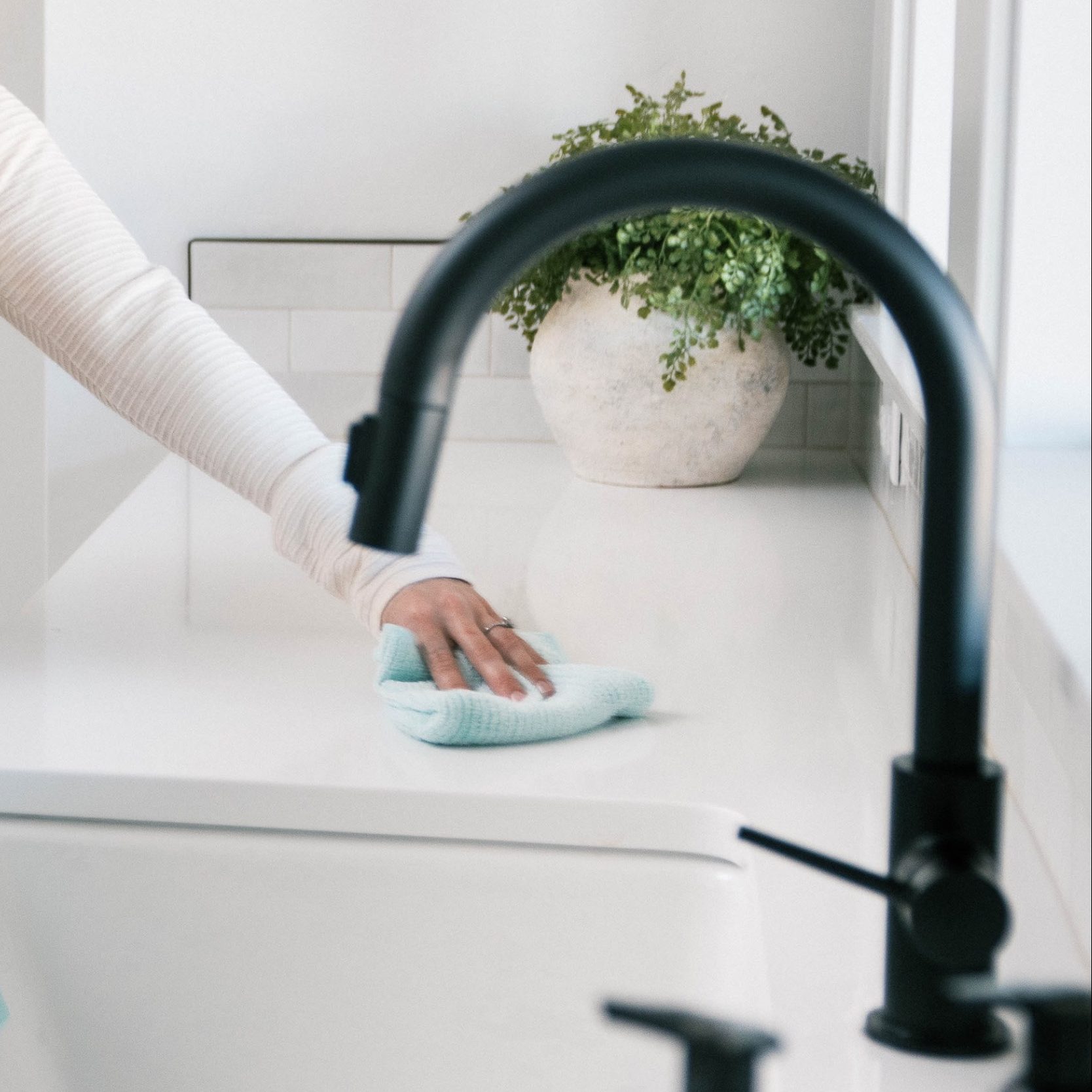




Lydia Says...
I also used bleach to clean my house always. My mom cleaned the house with bleach and Pine Sol, so obviously, I did the same until I began to get sick from it. You have opened my eyes that in order to disinfect, I don’t have to use bleach. Thank you so much for this article.
Clean Mama Says...
Post authorYou’re so welcome! Hooray for safe and effective cleaning!
Joetta Witkowski Says...
I couldn’t take this round of the clean your home course, because I just bought a new home and am moving the end of June, but I would love to take one later on. I’m also downsizing, so I would be up for a declutter class as well.
Thansk!
Clean Mama Says...
Post authorYay! Love to hear it Joetta!
Brenda Anderson Says...
How do you disinfect light switches and electrical outlets if the disinfectant can’t be sprayed on these and left for 10 minutes?
Clean Mama Says...
Post authorI pour rubbing alcohol on a white cloth and wipe those surfaces: https://cleanmama.com/how-to-clean-those-most-touched-areas/